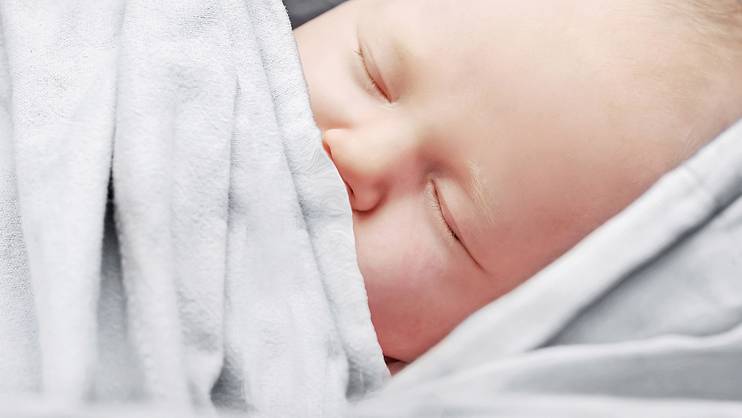New mum Shereena Sajeed longed to breastfeed but faced the challenge of raising an infant with a cleft lip and palate.

“My husband and I had been trying to conceive since our September 2012 marriage, but it wasn’t easy. To make matters worse, my father died suddenly in his sleep in April 2013, right after a family holiday. It was a traumatic time for me because I had just re-established close ties with him since my parents’ divorce. A month later, I found out I was pregnant.
At my 20-week routine scan, we found out that my baby had a cleft lip and palate. Completely devastated at the news, I fell into a depression for the next few days. Not only was I a first-time mother, I also had to care for a baby with cleft lip and palate. This condition occurs while the foetus is developing in the mother’s womb, when the lip and palate fail to completely join at around the third to sixth week of pregnancy.
Though I longed to breastfeed, Sean was unable to suck because of his condition. He had to use a special teat to control the flow of milk into his mouth. The hardest part was yet to come — Sean didn’t pass his hearing test and had to undergo his first surgery at 4 months. Ear tube insertions — grommets — are common for cleft-lip babies to enable them to hear properly.
Six weeks later, he underwent a second procedure to repair his cleft lip and nose. The most difficult part was seeing him post-surgery — his lip and nose were taped up but you could see the swelling, not to mention the blood. Though he was groggy from the anaesthesia, I could tell that he was in pain and uncomfortable. He hardly drank any milk and had to be fed medicine via a syringe.
Once he was discharged, the next seven days were really challenging. We had to draw the curtains at home and make sure he avoided the sun, since it could darken the scar and make it more obvious. Sean, who also had to be kept on bouncy seat the whole time to reduce the swelling, woke up crying every two hours.
Though I was on the verge of tearing my hair out, my husband and in-laws took turns to do shifts, so that everyone could get some rest. Feeding him post-surgery was difficult as well because we had to change his dressing to ensure his wounds were kept dry to prevent infection, but every time we did this, my baby would scream in pain.
Sean had to wear silicone nasal stents to prop up his nose, so that it wouldn’t collapse post-surgery. This was a constant struggle as he often screamed in discomfort when I tried to reposition them gently after cleaning several times a day. We also had to massage his lips countless times a day to loosen the scar, as well as to prevent keloids from forming.
Throughout this ordeal, which affected me greatly, the support of close family and friends pulled me through my toughest days. My husband was also a rock — he encouraged, supported and reassured me whenever I was depressed. Though this experience took a toll on me emotionally, I could see the light at the end of the tunnel, especially after hearing the words of encouragement from mothers with older kids who had gone through similar experiences.
My son is my inspiration as he continues to amaze me with his resilience, fighting spirit and loving demeanour. Sean smiles and laughs for me every day, and each day with him feels like a blessing. His cleft-lip surgeries went smoothly — his stitches have not only healed well, his nose is coming along nicely. He also underwent cleft-palate surgery in October 2014.
It’s still a long, long journey ahead with many uncertainties and challenges, but my faith is strong and somehow, I know it will be all right and things will work out for my son.”
Shereena Sajeed, 32, lives in Pasir Ris with her husband and 2-year-old son, Sean.
Photo: INGimages
Cleft lip and palate ― the facts
Parkway Shenton’s assistant medical director, Dr Kok Chuan, sheds light on cleft lip and palate.
• Cleft lip is a congenital birth defect of the upper lip, which can be small or may extend all the way to the base of the nose. Cleft palate is a defect in the roof of the oral cavity, which may involve either the soft or bony (hard) palate, or both. Cleft palate and lip can be independent or may co-exist.
• The exact cause of cleft lip or cleft palate unknown, but evidence suggests that genetics — especially between first-degree relatives (such as a parent, sibling or relative) — puts the baby at a higher risk of this condition.
• Most times, the cause of cleft lip or cleft palate is unknown. However, the foetus of a pregnant woman who takes certain medications such as for fits/seizures or acne, anti-cancer drugs, a high dose of vitamin A, or is exposed to cigarette smoke, industrial toxins and herbicides (dioxin), may be at higher risk of getting this condition.
• Cleft lip and cleft palate can be corrected via surgery. The exact number of surgeries varies, depending on the degree and severity of the condition. However, multiple surgeries are required usually for functional and cosmetic purposes.
This story was first published in the September 2014 issue of Mother & Baby Singapore.
Click here for more SmartParents True Stories.
Breastfeeding: Mastering the perfect latch
What to expect in your newborn’s development
Soothe your crying baby (and tell if he has colic)